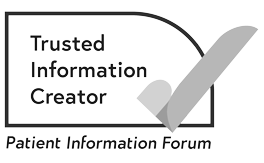Treatment for kidney cancer
Planning kidney cancer treatment
Your cancer team plan your treatment carefully. They will explain the options, and they can help you if you need to make decisions about treatment.
Treatment for kidney cancer depends on a number of factors, including:
- where the cancer is in the kidney
- the type of kidney cancer
- the stage and grade of the cancer.
Your cancer team will also consider:
- how well your kidneys work
- your general health
- your wishes.
This information is about the most common type of kidney cancer called renal cell cancer (RCC). Some of the information may be useful if you have a rarer type of kidney cancer. But you should check with your cancer team.
What is monitoring?
Some people do not start kidney cancer treatment straight away. Your cancer team may suggest delaying treatment until it is needed. This approach is called monitoring or active surveillance.
During monitoring, you have regular ultrasound, CT or MRI scans. The scans look for signs that the cancer is growing. Sometimes you have a guided biopsy to give your doctor more information about the cancer.
Your cancer doctor or specialist nurse may talk to you about starting treatment if:
- the scans or biopsy show signs the cancer is growing
- your symptoms change.
The main advantage of monitoring is that you can avoid the risks or side effects of treatment.
Who can have monitoring?
Monitoring may be an option for people with very small, slow growing kidney cancers (under 4cm). It is usually offered to people who have health problems that would increase the risks of surgery. Because the cancer is slow growing, it may not cause them any problems in their lifetime.
You may also have monitoring if you have advanced kidney cancer but you do not have symptoms. This lets you delay starting cancer drug treatments for a time.
Before deciding whether monitoring is right for you, make sure you understand why it is recommended. If you have any concerns, talk to your cancer doctor.
Monitoring can be difficult to adjust to. You may find it difficult to accept that the cancer is not being treated. But many people find it gets easier as time goes on.
Sharing your feelings can help. You could talk to family or friends, keep a journal or join a support group. You can also join the Macmillan Online Community's kidney cancer forum to share experiences and get support.
Early kidney cancer treatment
Cancer that has not spread outside the kidney (stage 1 or 2) is usually treated with surgery. If the cancer is small, the surgeon may only remove the part of the kidney with cancer. If the cancer is bigger, they may need to remove the whole kidney. Surgery may be the only treatment you need.
Tumour ablation treatment is sometimes used instead of surgery for early kidney cancer. This is when cancer cells are destroyed using very high or low temperatures or radiotherapy. This treatment can be useful if:
- you cannot or do not want surgery
- it is important to try and keep the affected kidney – for example if you only have 1 kidney.
Some people have regular scans to monitor a small kidney cancer instead of any treatment. In the Monitoring section, you can read more about delaying treatment until it is needed. If the cancer shows signs of growing, then treatment may start.
If you have a genetic condition called von Hippel-Lindau disease (VHL), you may have a targeted therapy called belzutifan instead of surgery. This can control a small early kidney cancer.
Locally advanced kidney cancer
Surgery is often the main treatment if the cancer has spread into surrounding tissues or nearby lymph nodes or veins, but not to other parts of the body.
You may also have an immunotherapy drug called pembrolizumab after surgery. This helps reduce the risk of the cancer coming back. Other drugs may be used before or after surgery as part of a clinical trial.
Advanced (metastatic or secondary) kidney cancer
Cancer drugs are the main treatment for advanced kidney cancer. The 2 types of treatment that are used are targeted therapy and immunotherapy. You may have a combination of drugs or 1 drug on its own. The aim is to:
- try to control the cancer
- reduce symptoms
- improve your quality of life.
Several different drugs are available. If one combination stops working, your cancer team may suggest trying a different drug or combination of drugs.
Each drug has its own side effects. Your cancer team will give you information about the likely side effects of your treatment. If you know the name of the drug you are looking for, you can use our list of cancer treatments and drugs to find it. It is important to tell your cancer team about any side effects, as these can usually be managed.
Related pages
Targeted therapy for kidney cancer
The following targeted therapy drugs are used to treat kidney cancer:
- axitinib (Inlyta®)
- belzutifan (Welireg®)
- cabozantinib (Cabometyx®, Cometriq®)
- everolimus (Afinitor®)
- lenvatinib (Lenvima®, Kisplyx®)
- pazopanib (Votrient®)
- sunitinib (Sutent®)
- tivozanib (Fotivda®).
Targeted therapy drugs often have several names, which can be confusing. Your cancer team might use 1 of the names above. These are the names of the drug, and 1 of its brand names. Or they might use 1 of the following terms. These describe how different types of targeted therapy drugs work inside your body:
- tyrosine kinase inhibitor or TKI
- mTOR inhibitor
- small molecule inhibitor.
All these treatments are tablets or capsules that you take by mouth (orally). You will usually continue taking a targeted therapy drug as long as it keeps the cancer under control. You will have regular CT scans to check this.
Most targeted therapy drugs are taken every day. Some drugs, such as sunitinib or tivozanib, are taken for a number of weeks followed by a break of several weeks. Your cancer team will explain how to take the drug you have.
Your cancer team may suggest short breaks in your treatment to help manage side effects. For example, you may take the drug for 5 days and then have 2 days off, where you do not take drug. Always follow your cancer team’s advice about how to take your treatment.
Immunotherapy for kidney cancer
The following immunotherapy drugs are used to treat kidney cancer. These drugs are also called checkpoint inhibitors:
- avelumab (Bavencio®)
- ipilimumab (Yervoy®)
- nivolumab (OPDIVO®)
- pembrolizumab (Keytruda®).
These drugs are usually given as a drip into a vein (intravenously). You usually have 1 dose every few weeks. Your cancer team can explain how many doses you may need and how often you may need it.
Other advanced kidney cancer treatments
Other treatments may also be used. These will not cure the cancer, but for some people, it can mean they are likely to live longer. They include:
- surgery to remove the kidney
- arterial embolisation – this treatment can shrink a kidney tumour by blocking the blood supply
- radiotherapy to treat symptoms.
If there is a secondary cancer in only 1 area of the body, for example the lung or a bone, you may have surgery or radiotherapy to treat that area.
Some advanced kidney cancers grow very slowly. If the cancer is growing slowly and not causing symptoms, your cancer team may suggest regular scans to check the cancer for a while before starting treatment. In the Monitoring section, you can read more about delaying treatment until it is needed.
About our information
This information has been written, revised and edited by Macmillan Cancer Support’s Cancer Information Development team. It has been reviewed by expert medical and health professionals and people living with cancer.
-
References
Below is a sample of the sources used in our kidney cancer information. If you would like more information about the sources we use, please contact us at informationproductionteam@macmillan.org.uk
Ljunberg B, Albiges L, Bedke J et al. European Association of Urology Guidelines on renal cell carcinoma. 2023. Available from https://uroweb.org/guidelines/renal-cell-carcinoma
Powles T, Albiges L, Bex A, et al. Renal cell carcinoma: ESMO Clinical Practice Guideline for diagnosis, treatment and follow-up. Ann Oncol. 2024 May 22. Available from: https://doi.org/10.1016/j.annonc.2024.05.537

Reviewer
Consultant Medical Oncologist in Renal and Skin Cancers
Royal Marsden Hospital, London
Date reviewed

Our cancer information meets the PIF TICK quality mark.
This means it is easy to use, up-to-date and based on the latest evidence. Learn more about how we produce our information.
The language we use
We want everyone affected by cancer to feel our information is written for them.
We want our information to be as clear as possible. To do this, we try to:
- use plain English
- explain medical words
- use short sentences
- use illustrations to explain text
- structure the information clearly
- make sure important points are clear.
We use gender-inclusive language and talk to our readers as ‘you’ so that everyone feels included. Where clinically necessary we use the terms ‘men’ and ‘women’ or ‘male’ and ‘female’. For example, we do so when talking about parts of the body or mentioning statistics or research about who is affected.
You can read more about how we produce our information here.




